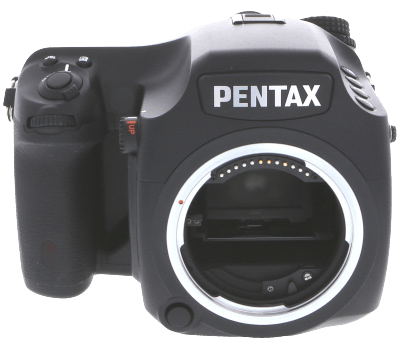Pentax 645D Specs and Scores

The Pentax 645D receives a score of 61 out of 100 for its general specifications. Launched in 2010 at a price of $9400, this DSLR camera measures 156 x 117 x 119mm and weighs 1480g (3.26lbs). When comparing the Pentax 645D to current market standards, its specifications show its age, but it still remains a reliable option for photographers. Ultimately, the Pentax 645D’s specifications display its sturdy build and reputable performance, making it a noteworthy choice in the world of DSLR cameras.
Pentax 645D Overview and Optics
The Pentax 645D receives an optics score of 66 out of 100. This camera boasts a 40-megapixel CCD sensor, medium format sensor size, and a Pentax 645AF2 lens mount. The Prime II processor ensures fast image processing, even though the shooting speed is only 1.1 frames per second. The camera’s DXOMARK sensor score is 82, and it has a 4:3 aspect ratio. However, the Pentax 645D lacks image stabilization.
When comparing the Pentax 645D to other cameras in today’s market, its specifications may not stand out as the most impressive. The medium format sensor size and 40-megapixel resolution are noteworthy, but the lack of image stabilization and the slower shooting speed may deter some users. Despite these drawbacks, the Pentax 645D remains a solid choice for those looking for medium format capabilities and the ability to use Pentax 645AF2 lenses.
Pentax 645D Video Performance
The Pentax 645D lacks video functionality. However, it offers built-in time-lapse capabilities for capturing images at intervals.
Pentax 645D Features and Benefits
The Pentax 645D features a score of 54/100 in this section, which calls for a closer look at its specifications. The screen size measures 3 inches, with a resolution of 921,000 dots. However, the camera lacks a touchscreen, flip screen, GPS, and Bluetooth capabilities. It does include WiFi connectivity.
When comparing these specifications to other cameras in the market, the Pentax 645D falls short in some aspects. The absence of a touchscreen, flip screen, and GPS functionality may limit its appeal to certain users. Moreover, the lack of Bluetooth connectivity is a drawback for those seeking seamless device pairing.
Taking these factors into account, the Pentax 645D’s features may not meet the expectations of users seeking a more advanced and versatile camera. Nonetheless, the camera still offers decent performance and WiFi connectivity, making it a suitable choice for specific photography needs.
Pentax 645D Storage and Battery
The Pentax 645D receives a storage and battery score of 35/100. This camera has a single memory card slot, which accepts SD and SDHC cards. In today’s market, many cameras offer dual memory card slots to provide more storage options and data backup. The 645D’s battery life is 800 shots, which is moderate compared to other cameras. The battery type is D-LI90 and unfortunately, USB charging is not available for this camera model.
Considering the storage and battery specifications, the Pentax 645D falls short in today’s competitive camera market. With only one memory card slot and no USB charging capability, this camera lacks the convenience and versatility that modern photographers seek.
